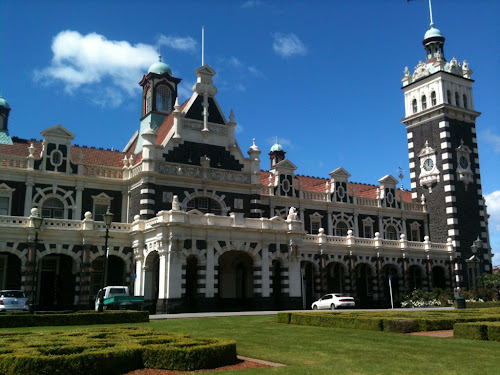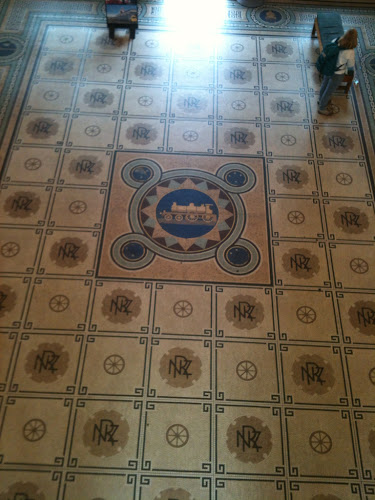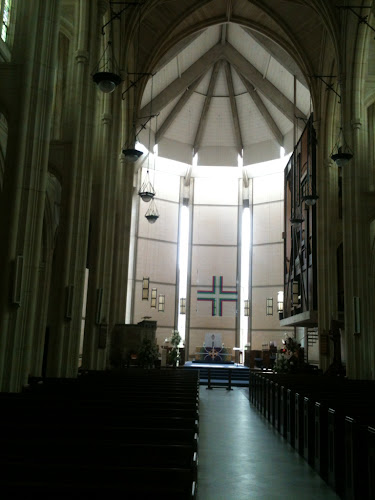Matt is having to go off each morning for radiotherapy and Denise took Clodagh down to Dunedin to do some shopping while I did the superb 5k walk steeply downhill to the bay and then around it to the town. There I found an array of impressive buildings.
First to the superbly detailed Flemish Renaissance-style railway station. One can see why the architect, George Troup, was nicknamed 'Ginger-bread George'.
The exterior is detailed in the beautiful local Oamaru limestone, with two imposing stained-glass windows. These are at the mezzanine balcony level.
Inside, the booking hall has a Royal Doulton porcelain mosaic floor. Regretfully it does not provide a splendid start to a railway journey, as it has been disused as such for many years. It does, however, remain one of New Zealand's finest historic buildings.
Across the road from the railway station are the law courts. This is built in local Port Chalmers bluestone and the lighter Oamaru stone. It conveniently stands just round the corner from the prison.
Next up the road to The Octagon, the centre of town, and to St Paul's Anglican Cathedral standing high on a prominent site above it. It's prominence is surprising in a predominantly Presbyterian settlement and owes it to the generosity of an early whaler and trader, Johnny Jones.
Inside it too uses the magnificent Oamaru stone for its columns. The Cathedral remained unfinished for 50 years but now has a contrasting modern clear-glassed chancel of stark simplicity, added relatively recently after a local architect won a competition to design it. The clear windows are intended to link the Cathedral with the world outside.
And next to the Cathedral, the Municipal Chambers built in 1880 from the fortune brought in by the gold rush. I fear not obvious from the photo, but it too is another example of using Oamaru stone. As the crane indicates, it is in the course of considerable restoration and refurbishment b
In front of both these buildings, in a prominent place in The Octagon, is a statue of Robert Burns to emphasise the strong Scottish connection. And nearby is the high-spired First Church, the flagship of the Presbyterian church in Otago.
A great introduction to a beautifully architectured city.








No comments:
Post a Comment